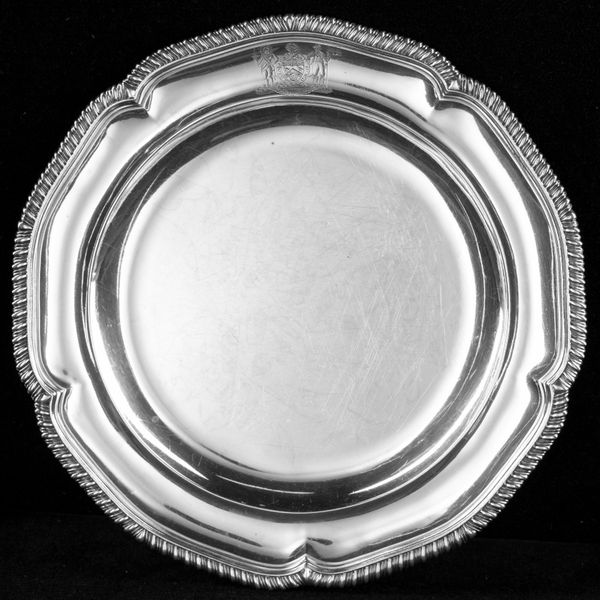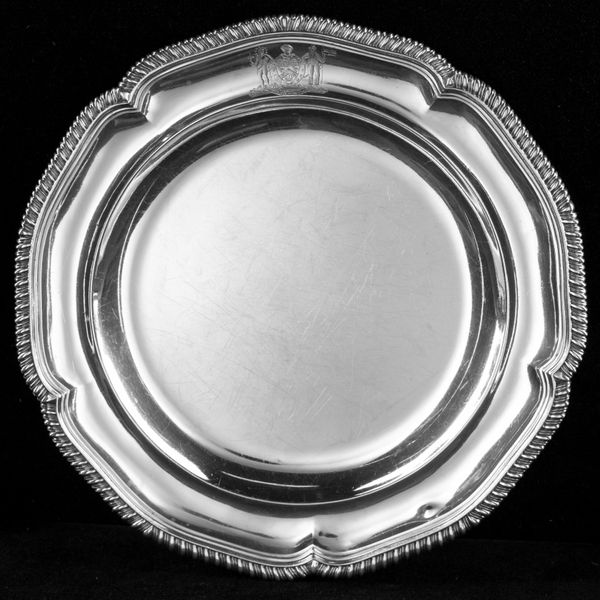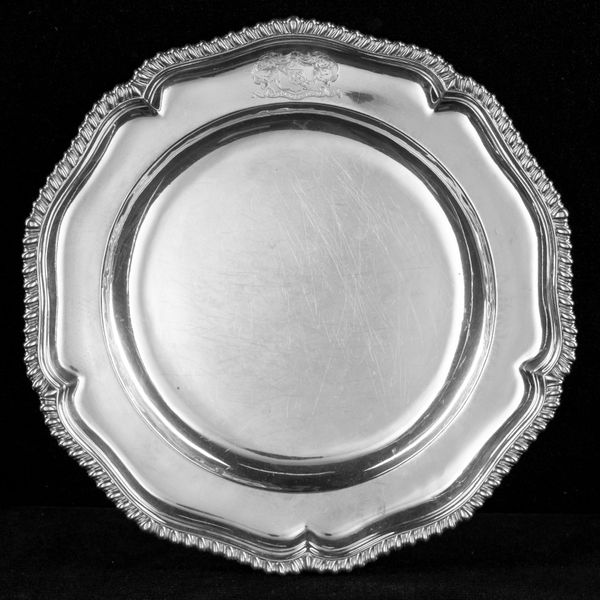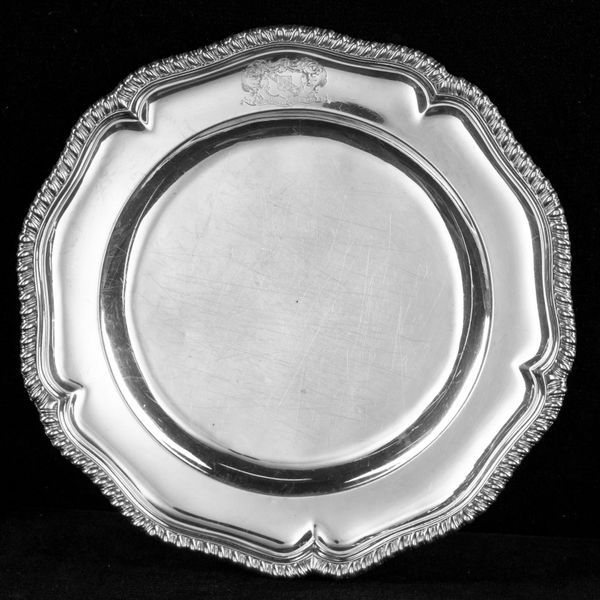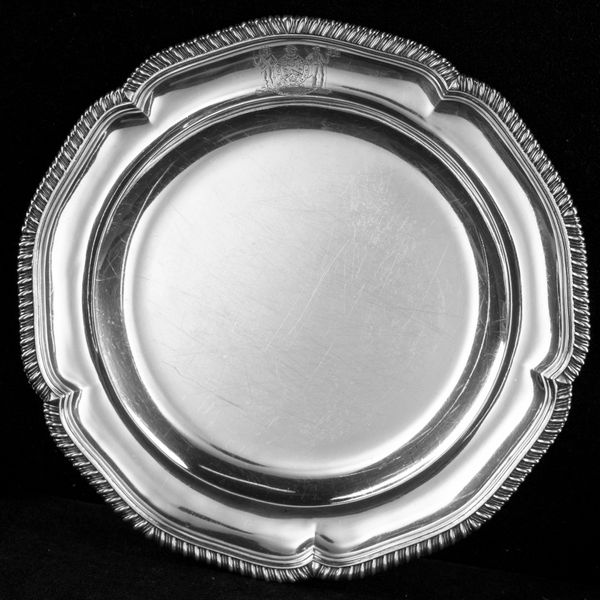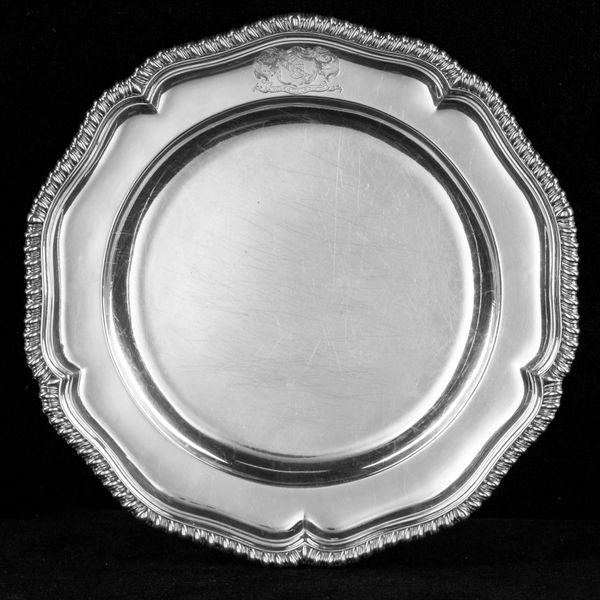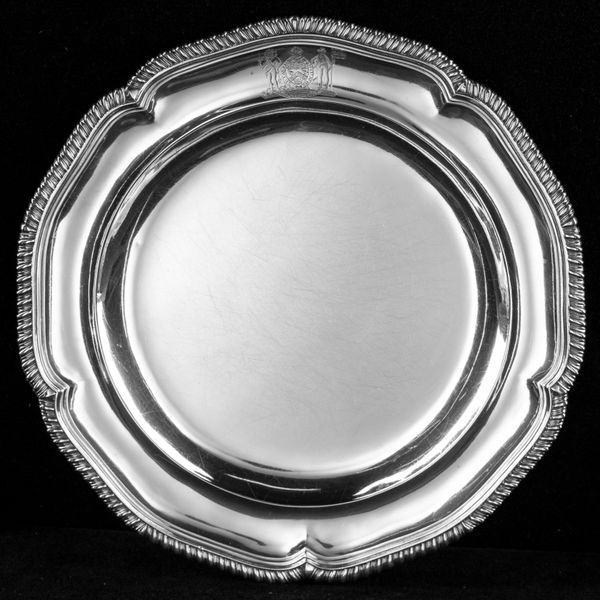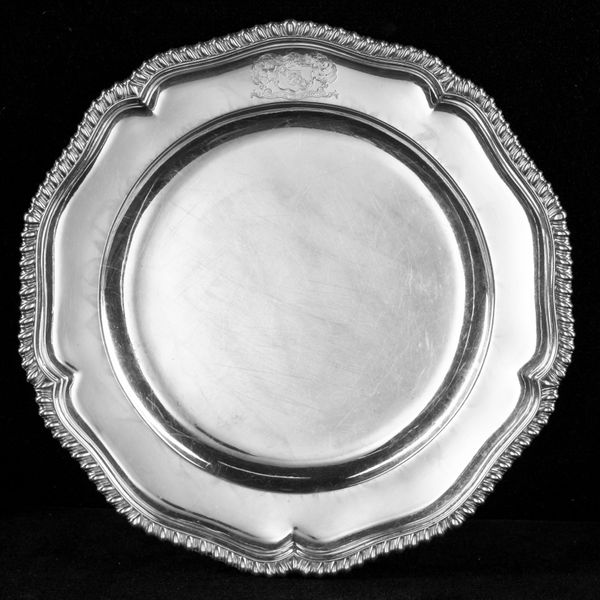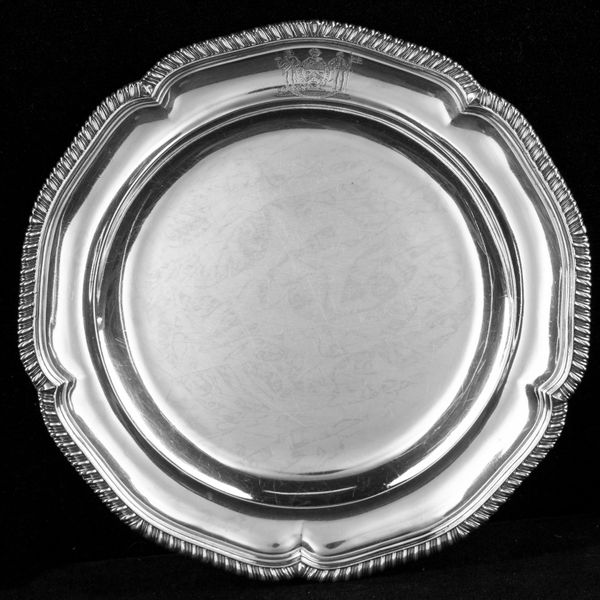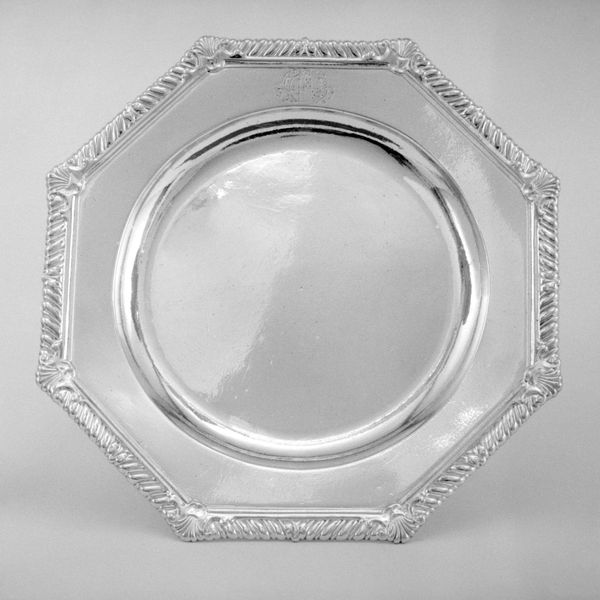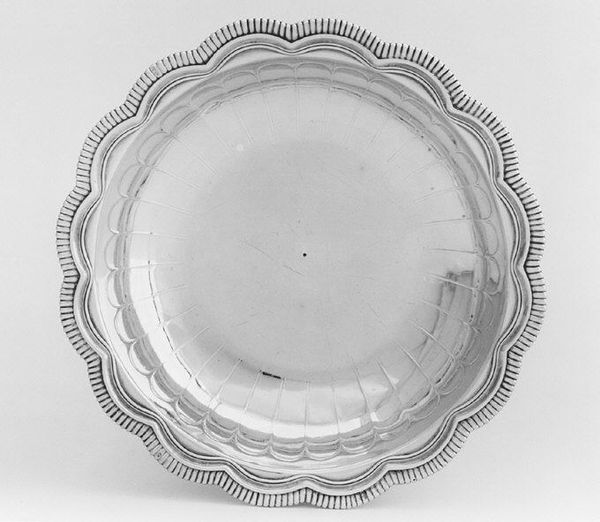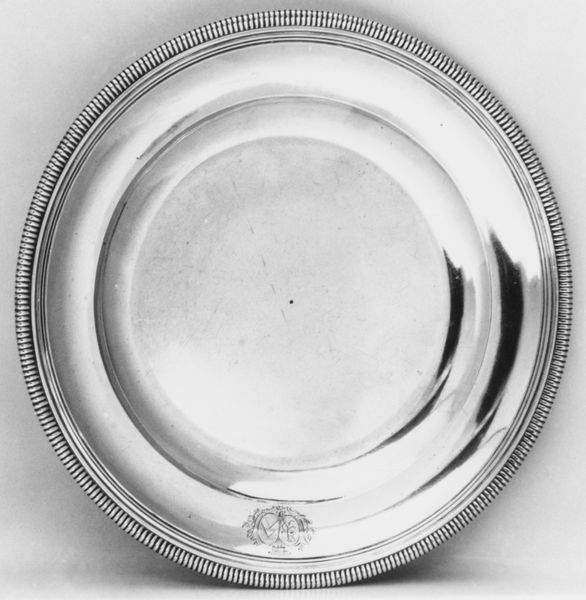
silver, metal, sculpture
#
silver
#
metal
#
sculpture
#
england
#
sculpture
#
decorative-art
Copyright: Public Domain
Curator: Up next, we have an English silver plate, crafted around 1807 and currently held at the Minneapolis Institute of Art. What do you think? Editor: It's pristine, almost imposing in its simplicity. It speaks to austerity more than abundance, although I imagine it’s meant to signify the latter. Curator: Yes, this piece prompts interesting questions. Silverware of this period often acted as silent conveyors of power and status, reflecting the wealth and social standing of their owners. I’m struck by how its existence underscores social hierarchies, where dining became a performative act. Editor: The clean lines and symmetrical design convey stability, which resonates with England's social and economic position at the time. The slightly raised heraldic shield at the top seems like a symbolic anchor, claiming tradition and order. Silver itself carries a lot of weight—purity, value, permanence. Curator: Absolutely. Beyond its metallic materiality, let's consider what dining traditions this plate embodies. Whose labor went into procuring the resources, designing, manufacturing, and, ultimately, serving with this object? It reveals disparities of labour exploitation in 19th century Britain, an unevenly distributed legacy we need to consider. Editor: The act of placing food upon this surface elevates it, sanctifies the ritual of eating. It is the chalice, but for everyday consumption among England's elite. Reflecting back, that heraldic emblem adds a personal dimension, speaking to a specific lineage rather than simply English identity. Curator: This is exactly what makes it compelling. A simple silver plate isn't just a pretty thing. It's enmeshed in complex networks of production, identity, and power dynamics within British society and the Empire. Editor: Seeing beyond the sheen uncovers layers of significance. Now, when I look at it, I see both surface and shadow, opulence and its underlying costs. Curator: A single plate offering countless insights, prompting us to consider both its symbolism and its place in larger historical narratives.
Comments
minneapolisinstituteofart about 2 years ago
⋮
It is impossible to be certain if Mary Sumner had a hand in making or engraving this set of plates. They could have been already completed by her husband William Sumner, a registered plateworker, before he died. In any case, women in the Sumner family were very involved with the operations of the firm. Shortly after Mary registered her mark as a widow, she formally entered into partnership with her daughter, Elizabeth Sumner, one of the few women known to enter the trade formally before marriage.
Join the conversation
Join millions of artists and users on Artera today and experience the ultimate creative platform.
